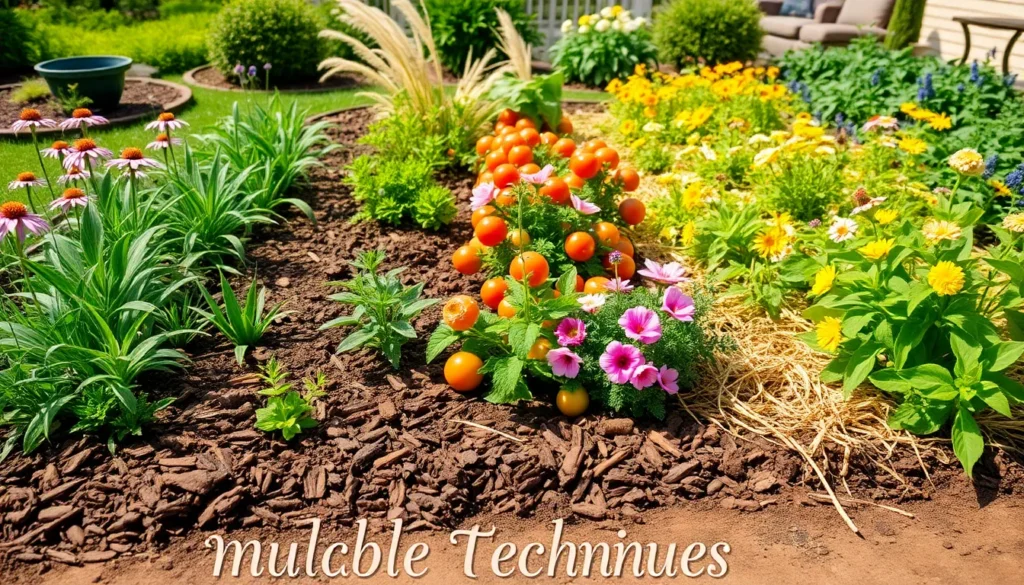Welcome to “Top 10 Mulching Techniques For Garden Beds,” your ultimate guide to enhancing the beauty and health of your garden! Whether you’re a novice just starting to dig into the soil or a seasoned gardener with years of experience under your belt, mulching is a transformative practice that can elevate your gardening game to new heights. By exploring this thoughtfully curated list, you’ll uncover a treasure trove of techniques that are not only practical but also astonishingly effective in nurturing your plants.
Imagine a garden where your plants thrive effortlessly, soil remains fertile, and weeds are kept at bay—all thanks to the magic of mulching! This guide is designed to equip you with the knowledge and confidence to apply these methods successfully, ensuring your gardening efforts yield lush, vibrant results. As you delve into each technique, you’ll discover how to enhance moisture retention, regulate soil temperature, and create a stunning visual appeal, making your garden the envy of the neighborhood.
Straw Mulching (Natural Weed Suppression)
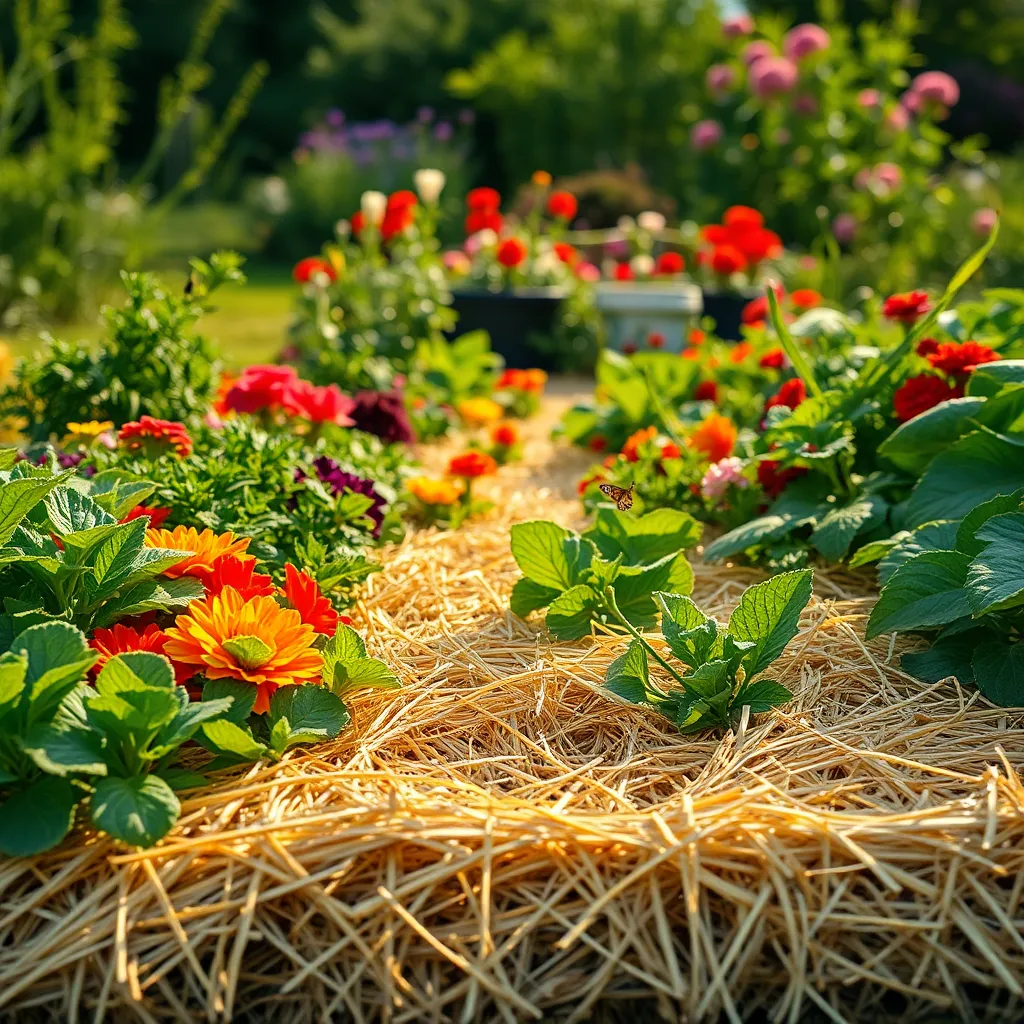
Straw mulching is an excellent natural method for suppressing weeds in your garden beds. By covering the soil with a thick layer of straw, you can effectively block sunlight from reaching weed seeds, preventing their growth.
For best results, apply a layer of straw about 3 to 4 inches thick, as this depth is ideal for both weed suppression and moisture retention. Make sure to use clean straw, free of weed seeds, to avoid introducing new problems into your garden.
This mulching technique not only keeps weeds at bay but also helps maintain soil moisture, reducing the need for frequent watering. As the straw breaks down, it enriches the soil with organic matter, improving its fertility over time.
Gardeners new to straw mulching should note that it works particularly well in vegetable gardens, especially for crops like tomatoes and peppers. For advanced gardeners, consider using straw as a base layer and topping it with a finer mulch, such as shredded leaves, to enhance both texture and appearance.
Wood Chip Mulch (Long-Lasting Moisture Retention)
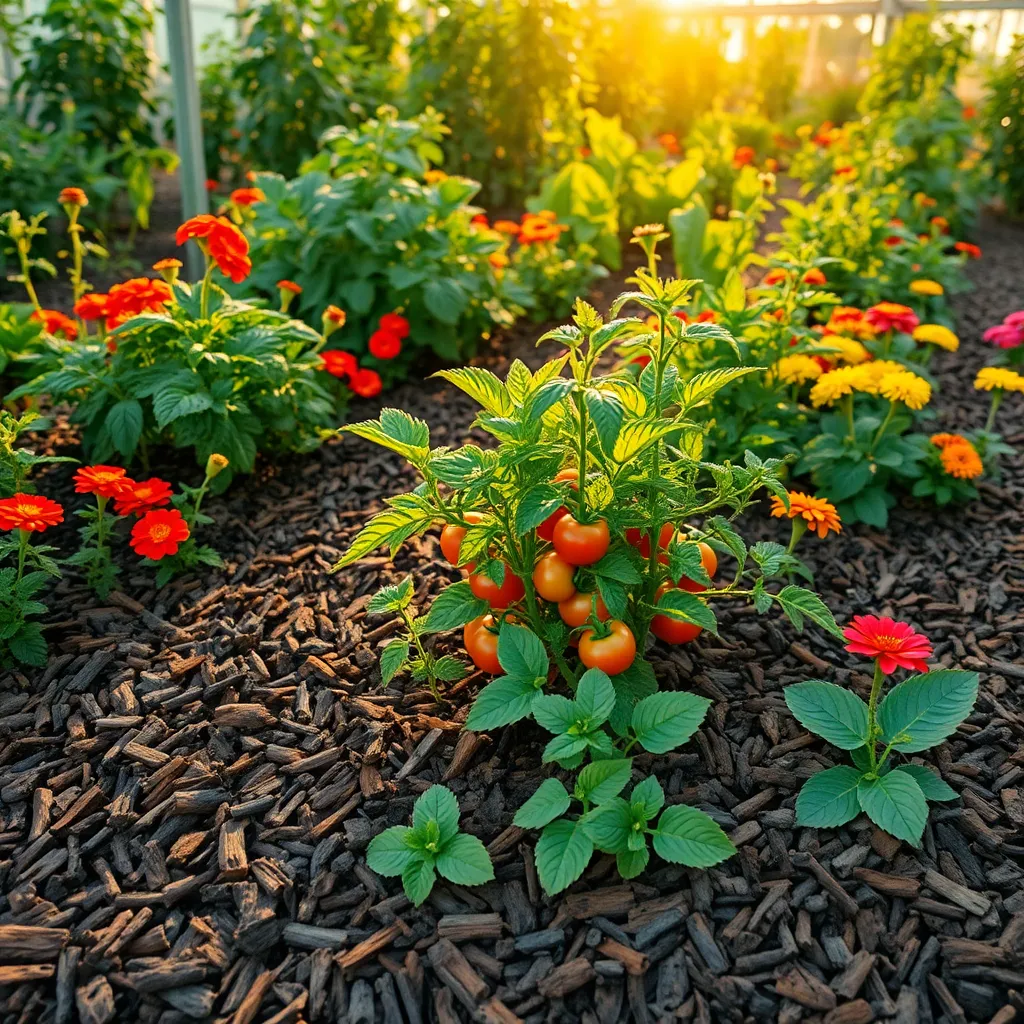
Wood chip mulch is an exceptional choice for gardeners looking to retain soil moisture over long periods. By spreading a 2 to 4-inch layer around your plants, you can significantly reduce evaporation and keep your soil cooler during hot months.
For beginners, it’s important to use untreated wood chips to avoid introducing chemicals into your garden. Opt for hardwood chips if available, as they decompose more slowly, providing longer-lasting benefits.
Experienced gardeners might consider creating a base layer with compost or well-rotted manure before applying wood chips. This practice enhances nutrient availability as the mulch breaks down, enriching the soil over time.
When applying wood chip mulch, ensure you keep it a few inches away from plant stems to prevent rot. Watering should be adjusted; generally, less frequent watering is needed due to the moisture-retentive qualities of the mulch.
Leaf Mulch (Sustainable Nutrient Recycling)
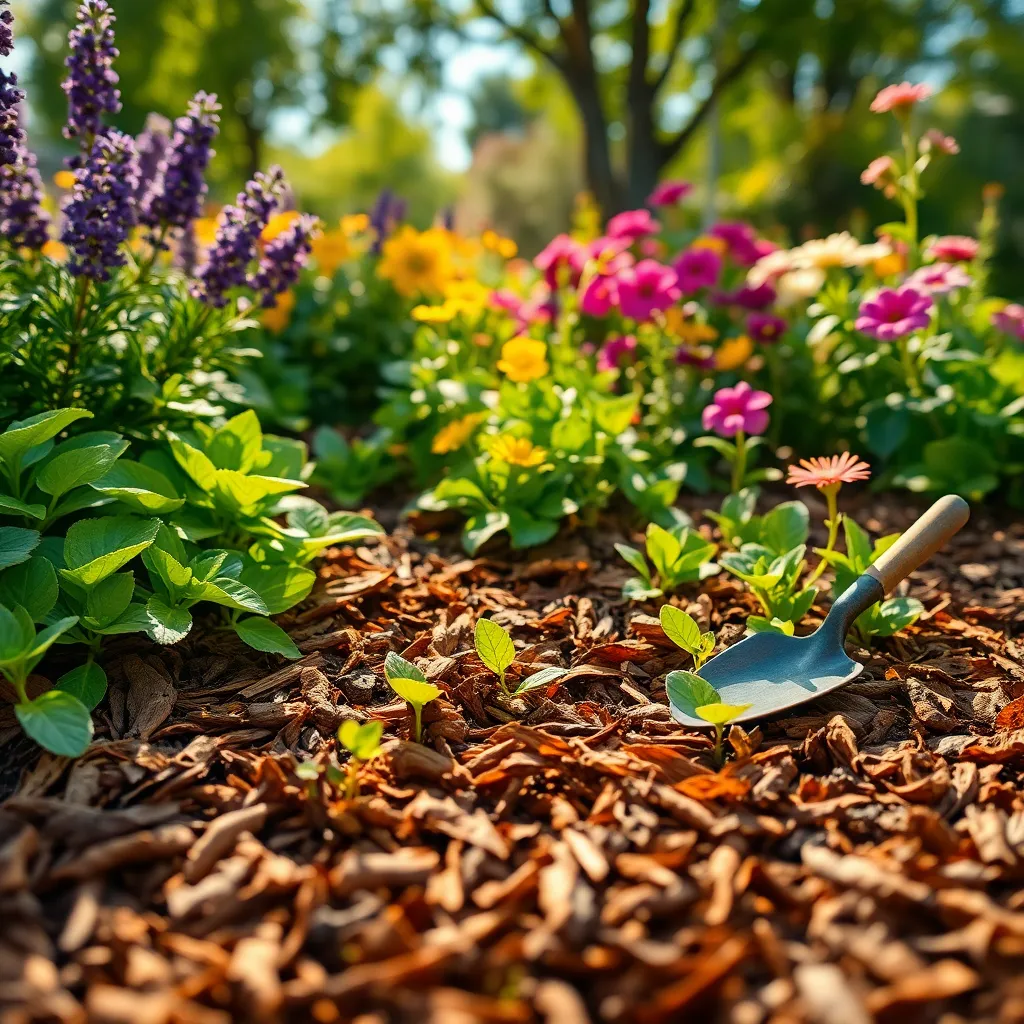
Leaf mulch is an excellent way to recycle nutrients naturally, turning fallen leaves into a valuable resource for your garden beds. By allowing leaves to decompose on your garden soil, you create a rich layer that retains moisture and suppresses weeds, reducing the need for frequent watering and weeding.
Begin by collecting leaves during the autumn when they are abundant and easy to gather. Shred them using a lawn mower or leaf shredder to accelerate decomposition and prevent matting, which can impede water and air flow to the soil.
Spread a layer of shredded leaves about 2-3 inches thick over your garden beds, ensuring even coverage. This layer will gradually break down, feeding the soil with essential nutrients and improving its structure over time.
For advanced gardeners, consider mixing leaf mulch with grass clippings or compost to enhance its nutrient profile further. Regularly check the mulch layer for compaction, and fluff it up with a rake if it becomes too dense, ensuring optimal air and water infiltration.
Compost Mulching (Boosts Soil Fertility)
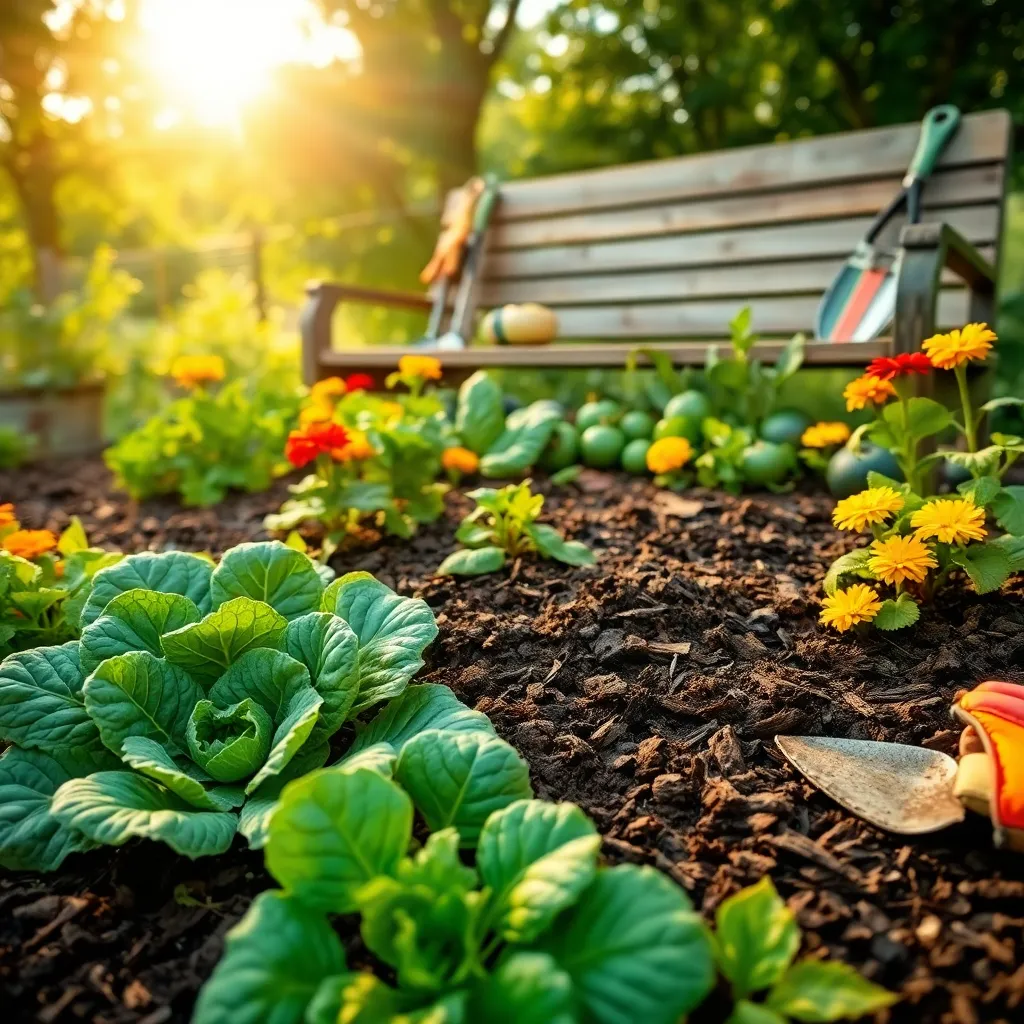
Compost mulching is an excellent way to boost soil fertility while improving plant health. By layering compost over your garden beds, you can naturally enrich the soil with essential nutrients, making it an ideal technique for both beginners and seasoned gardeners.
To apply compost mulch, spread a layer about two to three inches thick across your garden beds, ensuring the compost is well-rotted to prevent weed growth. This method not only feeds the soil but also helps retain moisture, reducing the need for frequent watering.
For those new to composting, start by collecting kitchen scraps, grass clippings, and dry leaves to create your own compost pile. Turn the pile every few weeks to speed up decomposition, ensuring you have a steady supply of nutrient-rich material.
Advanced gardeners can experiment with different compost ingredients such as coffee grounds or eggshells to tailor the nutrient profile to specific plants. Consider soil testing to better understand the deficiencies in your garden and adjust your compost accordingly for optimal plant growth.
Pine Needle Mulch (Acidic Soil Preference)

Pine needle mulch is an excellent choice for gardeners looking to enhance the acidity of their soil. This mulch type is particularly beneficial for plants like blueberries, azaleas, and rhododendrons that thrive in more acidic environments.
As pine needles decompose, they gradually release their acidity into the soil, making them a perfect long-term solution for acid-loving plants. Apply a layer of pine needle mulch about 2-3 inches thick around your plants, ensuring that it does not touch the stems or trunks to prevent any potential rot.
Water retention is a key benefit of using pine needle mulch, as its light and airy nature helps maintain moisture levels without compacting the soil. This is especially useful during hot summer months when evaporation rates are high, allowing for less frequent watering.
Advanced gardeners might appreciate that pine needle mulch also helps suppress weeds by blocking sunlight while allowing rainwater to penetrate the soil. If you’re concerned about the aesthetics of your garden, pine needles also provide a neat, consistent look that can enhance the visual appeal of your plant beds.
Grass Clipping Mulch (Quick Decomposition)

Grass clippings are a readily available resource that can be used as an effective mulch for your garden beds. They decompose quickly, enriching the soil with nutrients and improving its structure.
When using grass clippings for mulch, it’s important to apply them in thin layers to avoid matting. A layer about one to two inches thick will suffice, allowing air and water to penetrate while preventing weed growth.
One of the benefits of grass clippings is that they provide a steady supply of nitrogen, which is essential for plant growth. This makes them particularly beneficial for vegetables and other fast-growing plants that require a nutrient-rich environment.
To maximize the benefits of grass clippings, consider alternating them with other organic materials like leaves or straw. This will help maintain a balanced carbon-to-nitrogen ratio, promoting optimal decomposition and soil health.
Rock Mulch (Low-Decay Decorative Option)
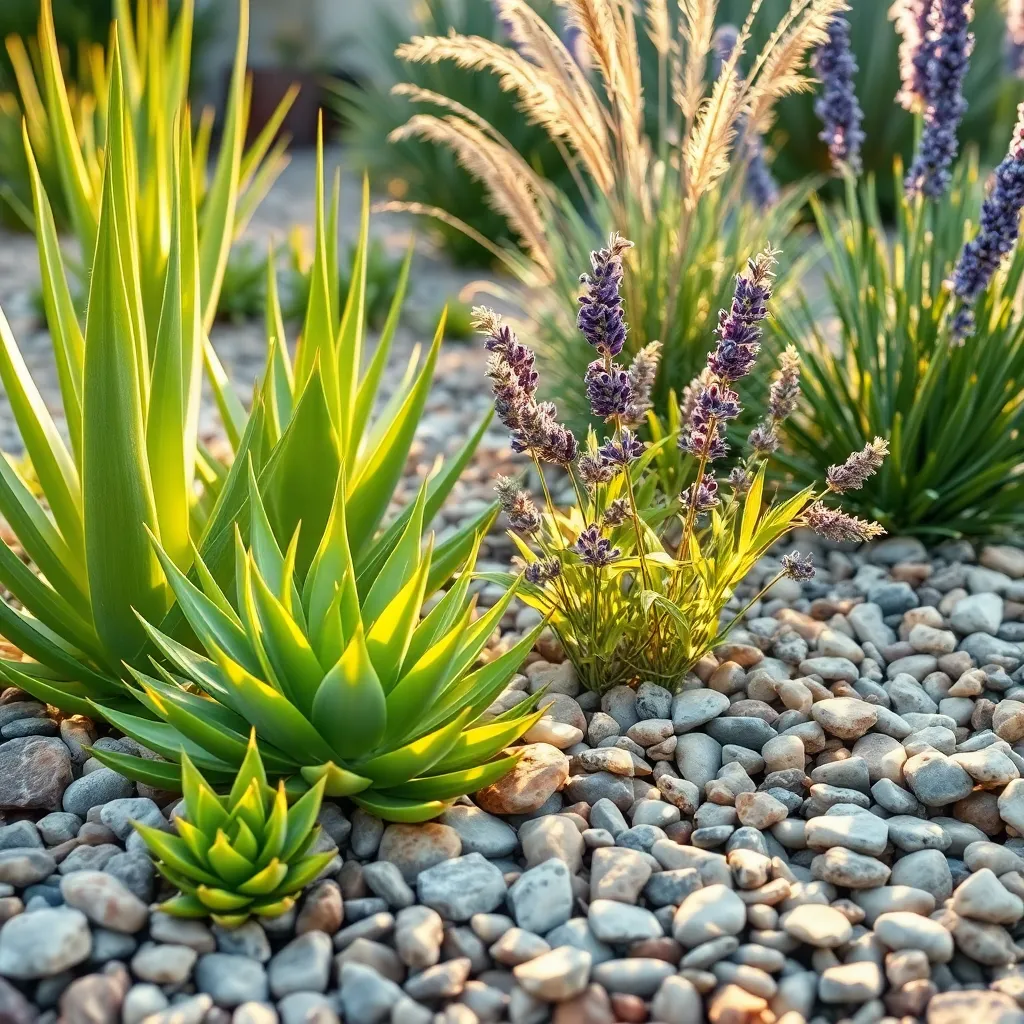
Rock mulch is an excellent choice for gardeners looking to reduce maintenance while adding a decorative touch to their garden beds. Unlike organic mulches, rocks do not decompose, making them a long-lasting option that requires minimal replacement.
For beginners, it’s important to note that rock mulch works best in areas with well-draining soil. If your garden has clay-heavy soil, consider amending it with organic matter before laying down the rocks to prevent water from pooling around plant roots.
To enhance your garden’s aesthetic, choose rocks that complement your existing landscape design. Options like river rocks, gravel, or lava rocks come in various colors and sizes, providing flexibility in achieving the desired look.
Advanced gardeners might appreciate that rock mulch can help suppress weeds effectively when paired with landscape fabric. First, lay down the fabric to create a barrier, and then spread the rocks evenly on top to ensure complete coverage.
Plastic Mulching (Temperature Control and Weed Barrier)
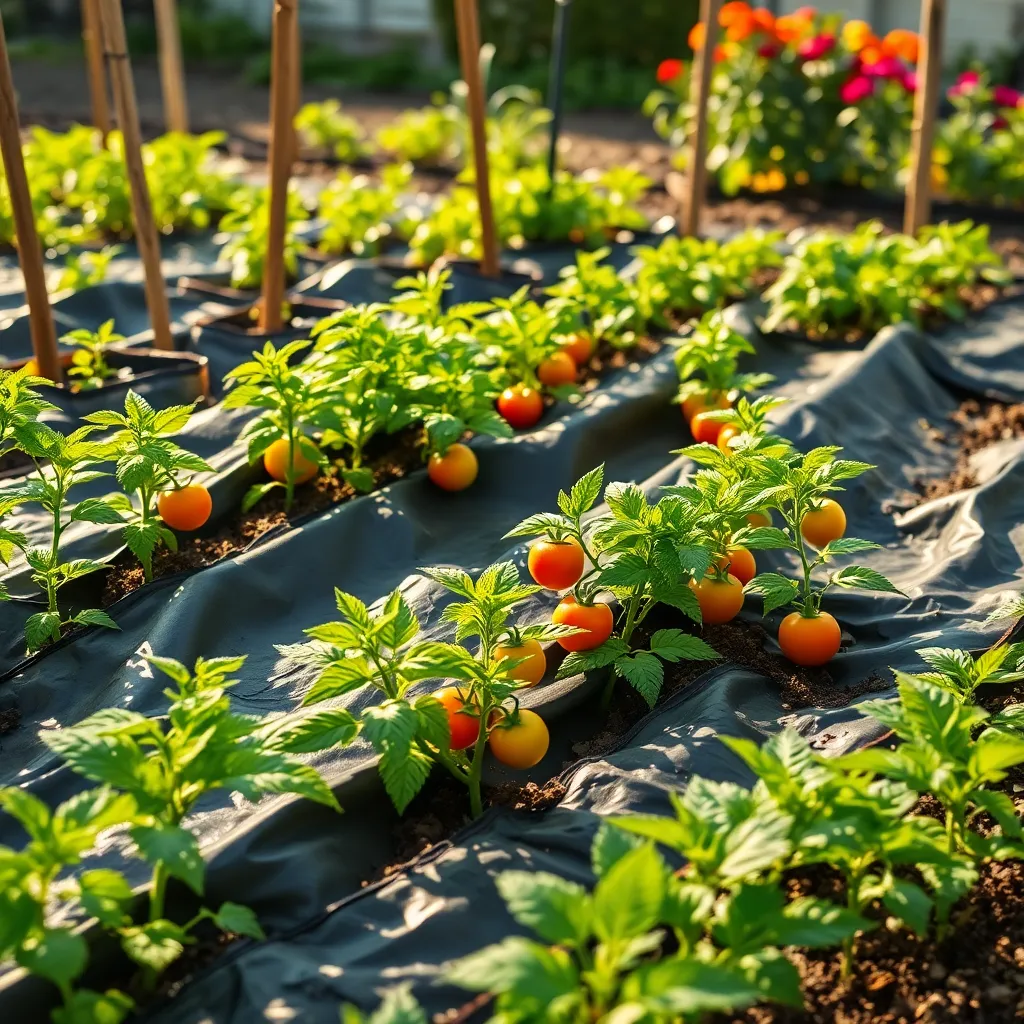
Plastic mulching is an effective technique for controlling soil temperature and suppressing weeds in your garden beds. This method involves laying down sheets of plastic over the soil, which can help retain heat during cooler months and prevent weeds from taking root.
When using plastic mulch, select a material appropriate for your climate. Black plastic is ideal for regions with cooler temperatures as it absorbs heat, while white or reflective plastic is better suited for warmer areas to reflect sunlight and reduce soil temperature.
It’s important to prepare your beds properly before applying plastic mulch. Make sure the soil is free of debris and well-watered, as the plastic will limit direct water access to the soil, requiring you to rely on drip irrigation systems or targeted watering techniques.
For gardeners looking to experiment further, consider using biodegradable plastic mulch as an eco-friendly alternative. This type of mulch breaks down over time, reducing waste and eliminating the need for disposal after the growing season while still providing effective temperature and weed control.
Bark Mulch (Aesthetic Appeal with Slow Decomposition)

Bark mulch offers both an attractive finish to garden beds and the benefit of slow decomposition. This mulch type is ideal for gardeners looking to enhance the visual appeal of their landscape while enriching the soil over time.
To apply bark mulch effectively, spread it evenly across the soil surface to a depth of about 2 to 3 inches. This depth ensures adequate coverage for weed suppression and moisture retention without suffocating plant roots.
One of the key benefits of bark mulch is its ability to break down slowly, gradually adding organic matter to the soil. This process can improve soil structure and fertility, making it particularly beneficial for heavy clay or sandy soils.
For best results, use bark mulch around established trees, shrubs, and perennials, as these plants will benefit most from its slow nutrient release. Ensure that mulch is kept away from direct contact with plant stems to prevent rot and disease.
Cocoa Hull Mulch (Rich Aroma and Nutrient Addition)
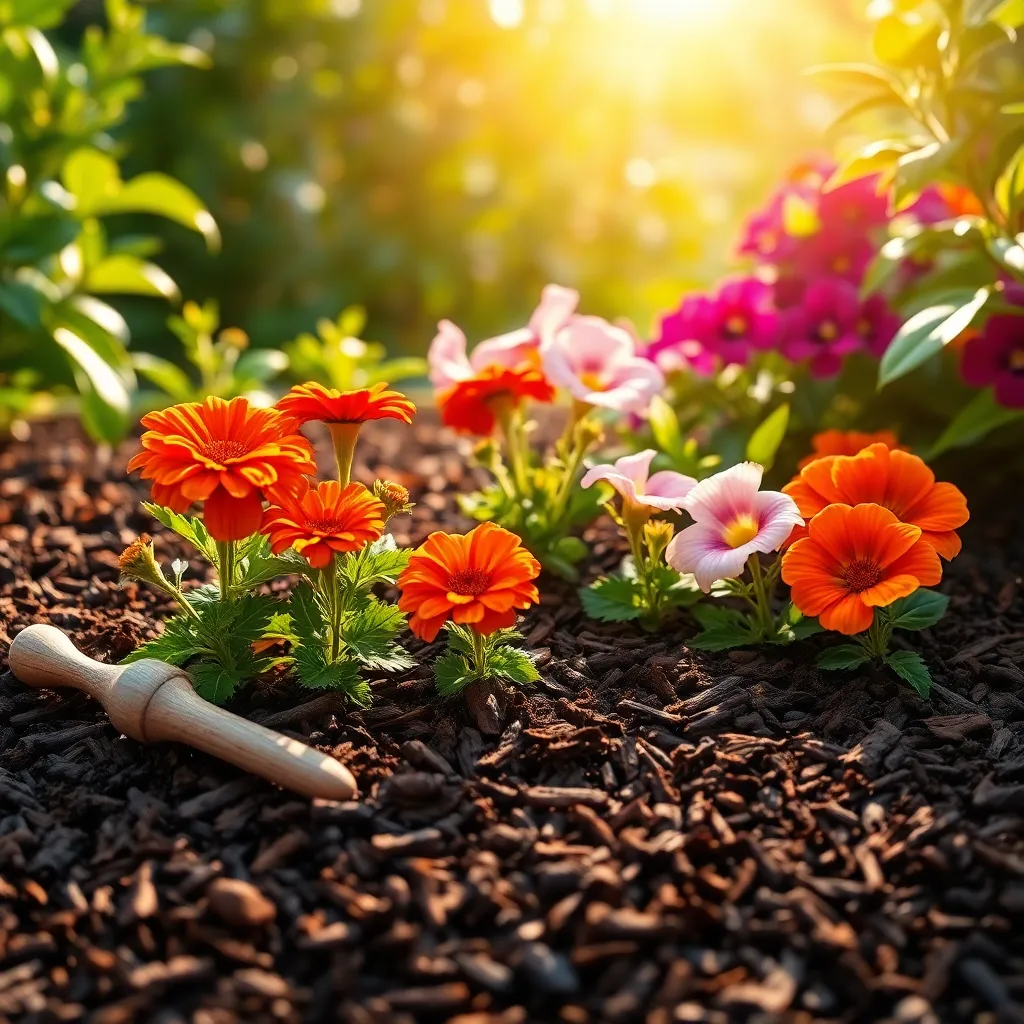
For gardeners seeking a mulch that offers both rich aroma and nutrient addition, cocoa hull mulch is an excellent choice. Derived from the shells of cocoa beans, this mulch not only enhances the soil but also adds a delightful chocolate scent to your garden.
Applying cocoa hull mulch is straightforward: spread a 1 to 2-inch layer over your garden beds, ensuring even coverage without smothering your plants. This mulch is especially beneficial for flower beds and ornamental gardens, contributing to moisture retention and weed suppression.
One of the primary advantages of cocoa hull mulch is its high nitrogen content, which is ideal for supporting lush, green plant growth. As it decomposes, it enriches the soil with essential nutrients, making it a great choice for enriching poor or sandy soils.
While cocoa hull mulch is excellent for many plants, it’s important to note that it can be toxic to dogs if ingested, similar to chocolate. Consider using an alternative if you have pets with access to the mulched area. This mulch performs best in moderate climates, as excessive humidity or rainfall can lead to mold growth.
Conclusion: Growing Success with These Plants
In exploring the ‘Top 10 Mulching Techniques for Garden Beds,’ we uncovered ten key relationship concepts: understanding compatibility (layering different mulch types), effective communication (ensuring mulch breathability), nurturing growth through trust (choosing organic materials), maintaining balance (regulating moisture), adaptability (seasonal adjustments), replenishing love (regular mulch updates), setting boundaries (defining garden edges), appreciating differences (diverse mulch textures), fostering resilience (protecting against weeds), and cultivating patience (waiting for growth). Each technique parallels essential skills for nurturing strong relationships, reminding us that consistent care and attention yield the best results.
As your immediate next step, consider applying one of these techniques to your relationship—perhaps start by enhancing communication or setting healthy boundaries. Remember, small, intentional actions can lead to significant transformations.
Don’t forget to bookmark this article to revisit these concepts as your relationship grows and evolves. Together, let’s foster gardens of love and connection that thrive over time. By committing to these practices, you’re not just mulching your garden beds—you’re laying the foundation for relationship success. Remember, the seeds of love you plant today will blossom into the beautiful realities of tomorrow.

